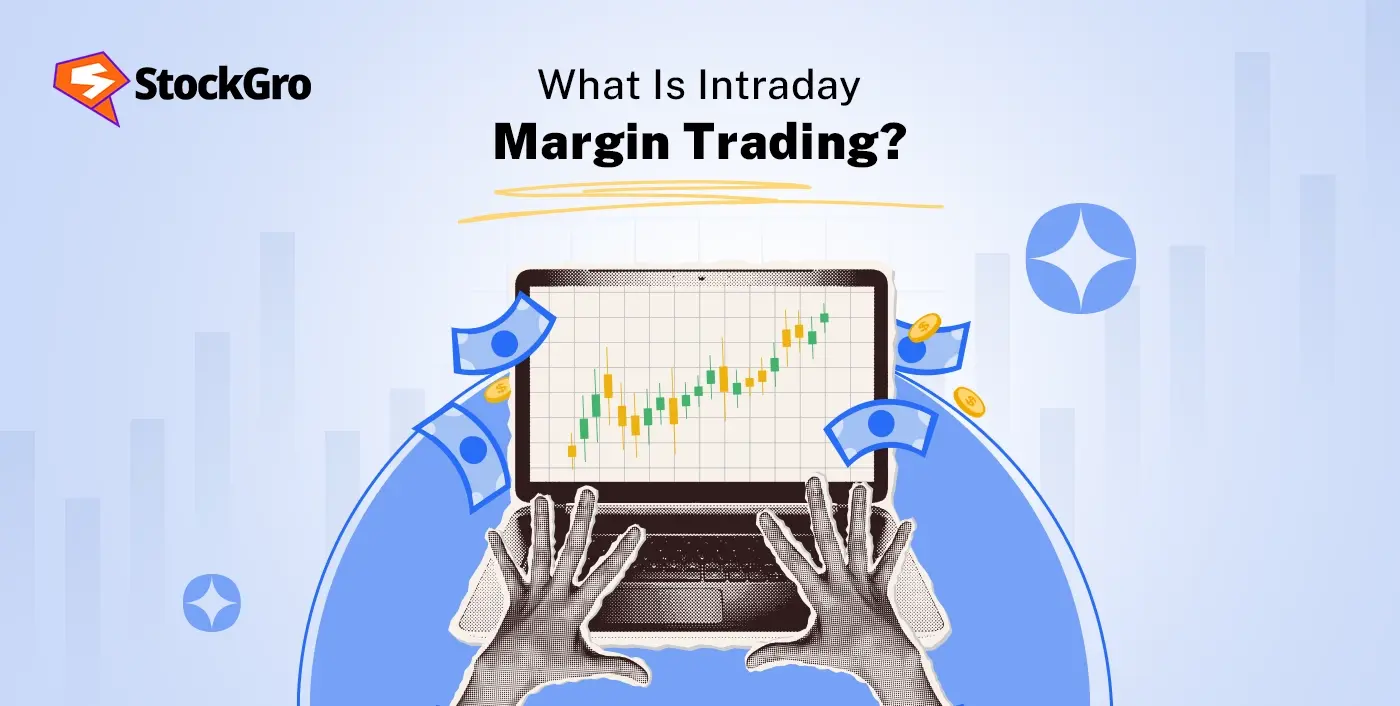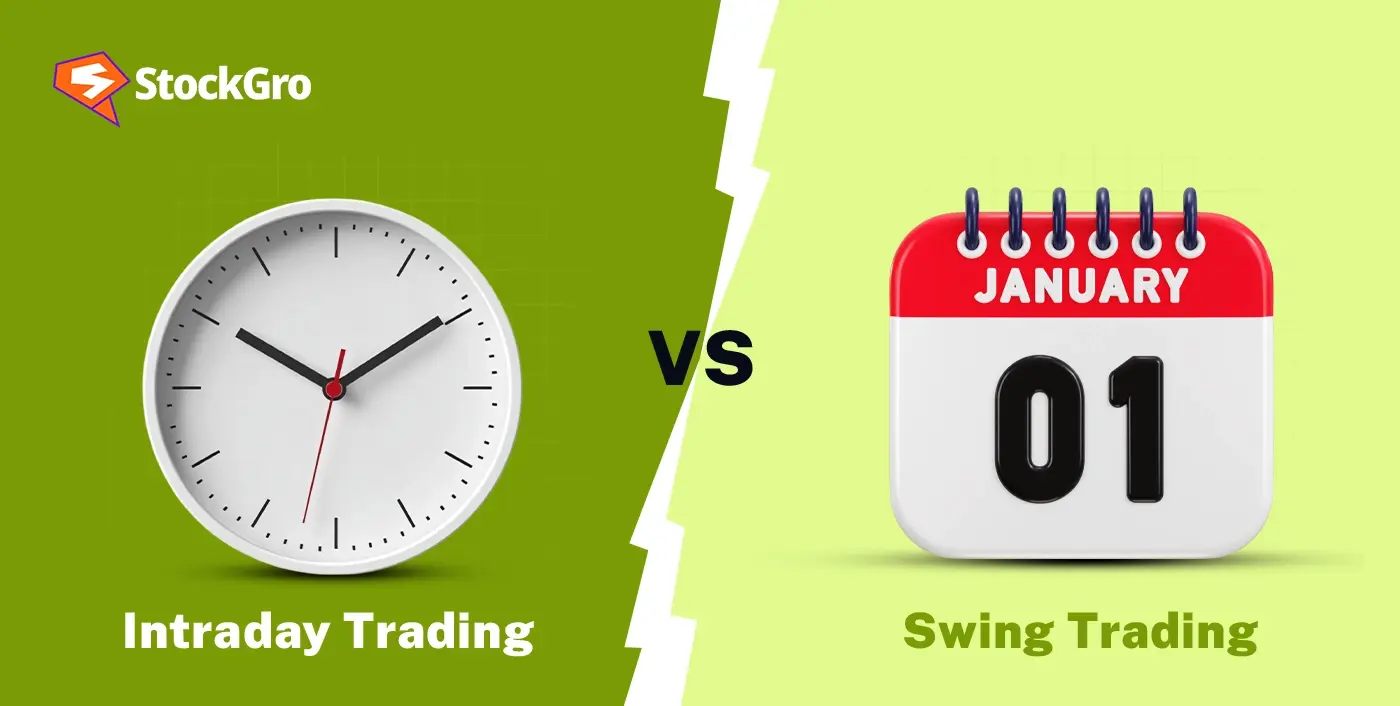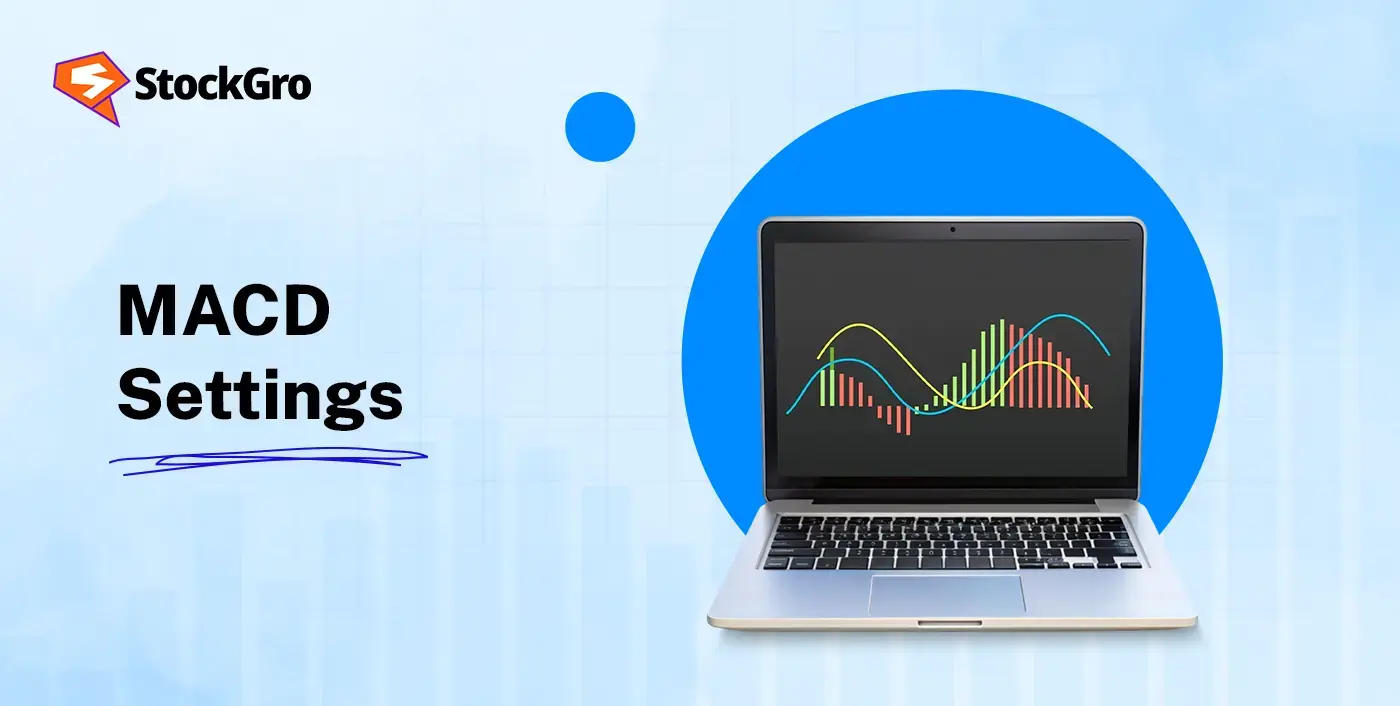
Not every trader has enough capital to make the most of short-term stock market moves. To manage this, some use intraday margin trading, a method that lets them trade with borrowed funds within the same day. This can increase potential gains but also raises the level of risk. In fact, with demat accounts rising from 3.6 crore in 2019 to 19.4 crore in 2025, this strategy has gained more attention. In this blog, we’ll discuss what is intraday margin trading, how it works, who can use it and more.
What is Intraday Margin Trading?
Intraday margin trading means buying and selling stocks within the same trading day using borrowed funds from a broker. This lets traders buy more shares than their actual capital allows, aiming to benefit from small price changes. Margin in intraday trading can increase potential gains, it also increases the risk of larger losses. All trades made on margin must be closed before the market closes that day. The margin amount needed is based on market exposure and includes components like Value at Risk (VAR) and Extreme Loss Margin (ELM), as defined by regulatory guidelines.
How Does Intraday Margin Work
Intraday margin trading lets traders use borrowed funds from their broker to buy more shares than they could with just their own money. The amount the trader puts in is called the “margin,” and the extra buying power given by the broker is known as “leverage.”
For example, if a trader has ₹20,000 and the broker offers 5x margin, they can trade stocks worth up to ₹1,00,000. This expanded exposure can increase potential gains, but it also raises the chance of larger losses if the market moves against the position.Margin amounts depend on market exposure and can be paid in cash or by pledging shares.
Who is Eligible for Intraday Margin
To participate in intraday margin trading, investors usually need to meet certain basic requirements:
- A demat and trading account must be opened, with all required documentation completed during the onboarding process.
- For the equity segment, intraday margin trading is generally available without any additional eligibility criteria.
- For trading in derivatives like futures and options, brokers may ask for proof of income as part of their risk assessment.
- Traders often compare brokers based on registration status, margin offerings, platform features, and transaction costs to choose one that fits their trading needs.
SEBI New Rules for Intraday Margin
SEBI’s new guidelines introduce key changes to intraday margin trading:
- Full Premium for Options: From Feb 1, 2025, option buyers must pay the entire premium upfront, leverage cannot be used.
- No Spread Benefit on Expiry: Calendar spread margin benefits won’t apply on expiry day for expiring contracts.
- Intraday Monitoring of Positions: From July 1, 2025 for index futures (and fully for options by Dec 5, 2025); for single-stock MWPL from Nov 3, 2025, exchanges will take at least four intraday snapshots.
- Leverage Cap: Brokers can offer a maximum of 5x leverage (20% margin); stricter enforcement continues.
- Additional Expiry-Day Margin: A 2% Extreme Loss Margin applies to option sellers on expiry days.
- Surveillance Stock Restrictions: Intraday trading is disallowed in ESM and T2T stocks.
- Margin Pledge Rules: From Sept 5, 2025, margins must be fulfilled via SEBI’s pledge/re-pledge system through depositories.
- Market Wide Position Limit (MWPL) Controls: If open interest exceeds 95%, only position reduction is allowed.
What is a Day Trading Margin Call?
A day trading margin call typically arises when the account’s equity drops below the broker’s stipulated threshold during intraday trading. This usually occurs when the value of margin-based trades drops, increasing the trader’s risk exposure. In such cases, if account balances fall short, brokers may request additional funds or collateral. If unmet, the broker may liquidate existing positions without notice to recover the deficit.
For example, suppose a trader with ₹25,000 uses 4x margin to buy ₹1,00,000 worth of stock A. Later, they also buy ₹40,000 of stock B without selling the earlier position. This overextends their buying power, and even if both trades are closed that day, a margin call may still be issued the next day.
Advantages of Intraday Margin
Intraday margin offers certain benefits that can improve a trader’s ability to participate in the market more actively. Some of these benefits include:
- Helps enable traders to enter positions that are larger than what their cash balance alone would allow.
- Enables efficient use of capital, as traders can use shares in their Demat account as collateral to access funds beyond their cash balance.
- Allows greater exposure to short-term price movements, which may lead to improved returns on successful trades.
- Provides flexibility to diversify across multiple stocks or, in some cases, take short-selling positions to benefit from falling prices.
Disadvantages of Intraday Margin
While intraday margin trading can offer various benefits, it also comes with a number of important risks such as:
- Unfavorable price movements may lead to magnified losses, potentially exceeding the initial capital used.
- A drop in account value or an unexpected market move can trigger margin calls; failing to meet them may lead to automatic position liquidation by the broker.
- Additional expenses like interest on borrowed capital and brokerage fees can impact net gains from trades.
- Overuse of margin and higher stakes can lead to emotional or impulsive decisions, especially among less experienced traders.
Conclusion
Intraday margin trading opens the door to higher buying power and quicker trades, all within a single market session. But with greater exposure comes added risk. Knowing what is intraday margin trading is helps understand how it works, what it offers, and where caution may be needed in fast-moving markets.
FAQs
Yes, brokers are allowed to square off intraday trading positions if they are not closed by the trader before market closing time. Most brokers set a cut-off time, usually between 3:15 PM and 3:20 PM, to avoid overnight exposure risks. If the position remains open past this time, the broker initiates an auto square-off process to close the position, which may also involve additional charges or service fees.
If you forget to manually square off an intraday margin position, the broker will typically square it off automatically before the market closes. This process helps ensure that positions are not carried forward beyond the trading day. The time and price at which the square-off occurs may vary, potentially affecting profit or loss. Additionally, the broker may levy a square-off charge, depending on their terms and conditions.
Currently, brokers in India can offer a maximum leverage of up to 5 times, which means traders need to maintain at least 20% of the trade value as margin. This limit is set by SEBI and applies to intraday trading as well. Earlier, brokers could offer much higher leverage, but recent regulations now restrict this to ensure disciplined risk management. Brokers are required to follow this uniformly, and regular checks help ensure there are no exceptions.
Yes, it is possible to lose more than your initial deposit in intraday margin trading. If the market moves sharply against your position and the losses exceed your available margin before the position is squared off, your trading account can show a negative balance. In such scenarios, brokers may issue a margin call or request you to deposit additional funds to cover the shortfall, depending on their policies and the size of the incurred loss.
Maintaining a minimum margin balance is typically required by brokers when engaging in margin trading. If your account balance falls below the required maintenance margin during the trading day, the broker may initiate a margin call or close some or all open positions to mitigate potential losses. This ensures that the broker’s risk exposure remains manageable. The specific margin requirements can vary based on the broker’s policies and the instruments being traded.

